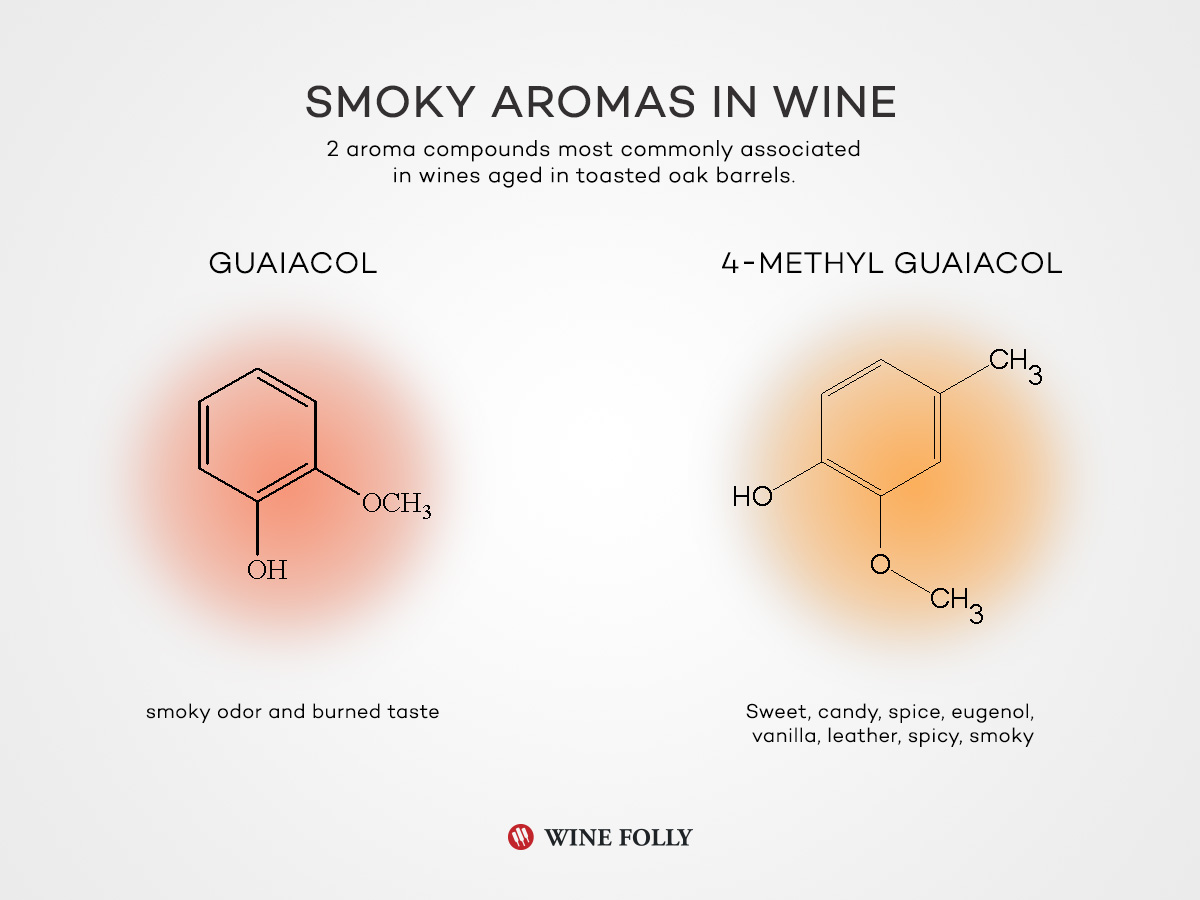Fire, smoke, and ash–always an unwelcome prelude to harvest. So, how do wildfires affect wine?
It’s that time of the year again in the West. Washington, Oregon, California, Idaho, and western Canada are all getting hit hard by late summer wildfires. Locals are calling it “The Fifth Season.”
Do fires affect the grape harvest? Short answer: yes.

The thing on every winemaker’s mind? Smoke taint.
After the 2003 Canberra bushfires, the Australian Wine Research Institute conducted an in-depth scientific investigation to find out if the smoke affected the Aussie wines and how.
Their research revealed that, yes, if wines aren’t corrected, smoke taint will add two distinct compounds to wine: guaiacol (commonly called Creosote) and 4-methyl guaiacol.

Guaiacol and 4-methyl guaiacol are fairly common compounds in wine. When winemakers use toasted wooden barrels to impart vanilla-like flavors into wine, they also get smoky tasting compounds from aging wine in the charred oak.
Of course it’s one thing to impart flavor on purpose, and it’s quite another to have it contributed at random from a forest fire! Instead of getting the pretty, woodsy, smoky flavors, you’re more likely to taste an abrasive, bitter, and charred flavor. Not great. If you are concerned, it’s useful to note that smoke taint particularly impacts white wines.
So are fire-struck regions and smoke tainted wines a given? Well, hold your horses. According to Sean P. Sullivan, Contributing Editor to Wine Enthusiast and founder of Washington Wine Report,
“There are numerous variables involved. One is the proximity of the vineyard to the fire, as well as the intensity of the smoke,” Sullivan notes. However, this is not a given.
“In 2012, the Wenatchee Complex fire spread smoke throughout much of Eastern Washington during harvest time. This led to concerns about the potential for smoke taint. However, no one I spoke to that year reported smoke taint and I didn’t notice [any] on wines that I tasted from that vintage. Quite to the contrary, it was a remarkable vintage for the state.”
Another variable is at what stage in the grape life cycle the smoke occurs. “The period from around veraison through harvest [is] one of the susceptible periods,” says Sullivan. “That’s obviously the point that we are at right now, which causes concern.”
 Smoke taint study equipment at Washington State University-Prosser Research Center.
Smoke taint study equipment at Washington State University-Prosser Research Center.Even if vineyards and grapes are exposed to smoke, it’s not the end of the world for their wines. The Australian Wine Institute has come up with a few practical tactics for managing smoke-exposed fruit:
- Hand harvest fruit to minimize breaking or rupturing of skins
- Exclude leaf material to limit smoke-related characteristics
- Maintain integrity of harvest fruit, avoiding maceration and skin contact
- Keep fruit cool to extract less smoke-related compounds
- Whole bunch press to reduce extraction of smoke-derived compounds
In addition to these strategies, advances are happening all the time. In Prosser, Washington, there is an on-going study on the impact of smoke on vines being conducted by Washington State University professor, Tom Collins.
The experiments involve understanding the impact of smoke on vines and wines by replicating wildfire conditions in a controlled environment with added variables such as smoke intensity, fuel source, grape variety, and more.
The point is this: Where there’s smoke, there’s fire, yes. But, there will still be a large number of quality wines.
